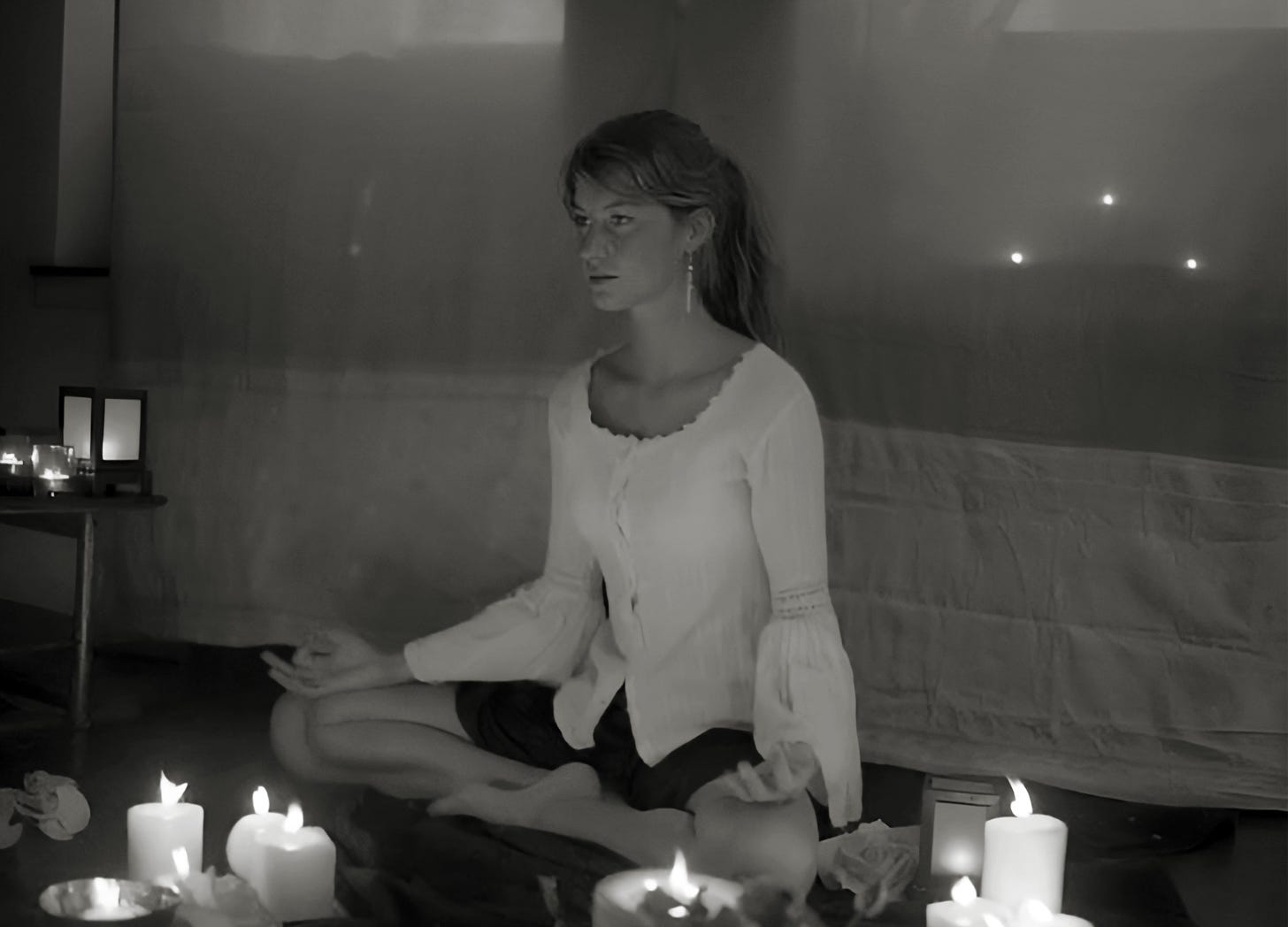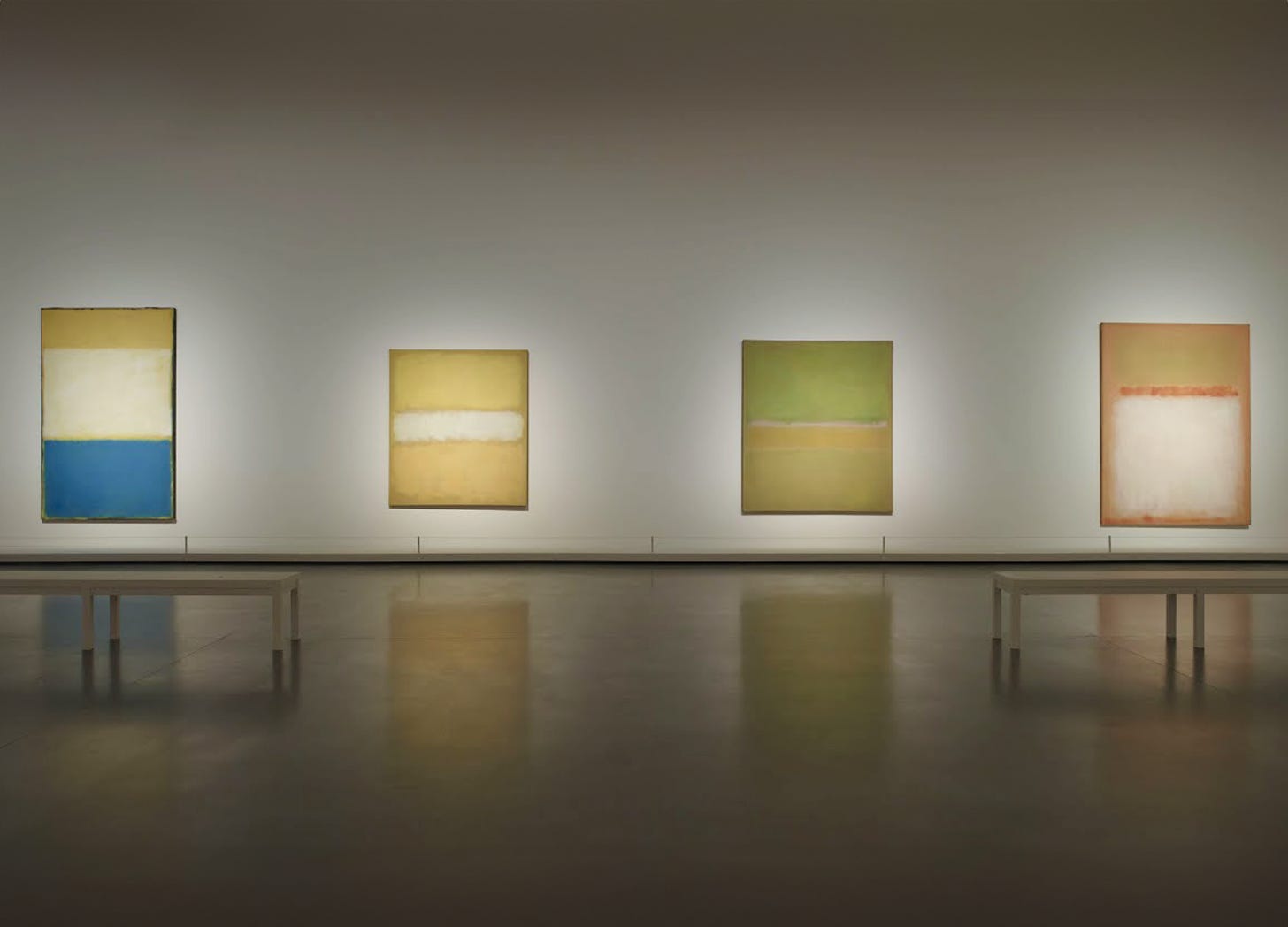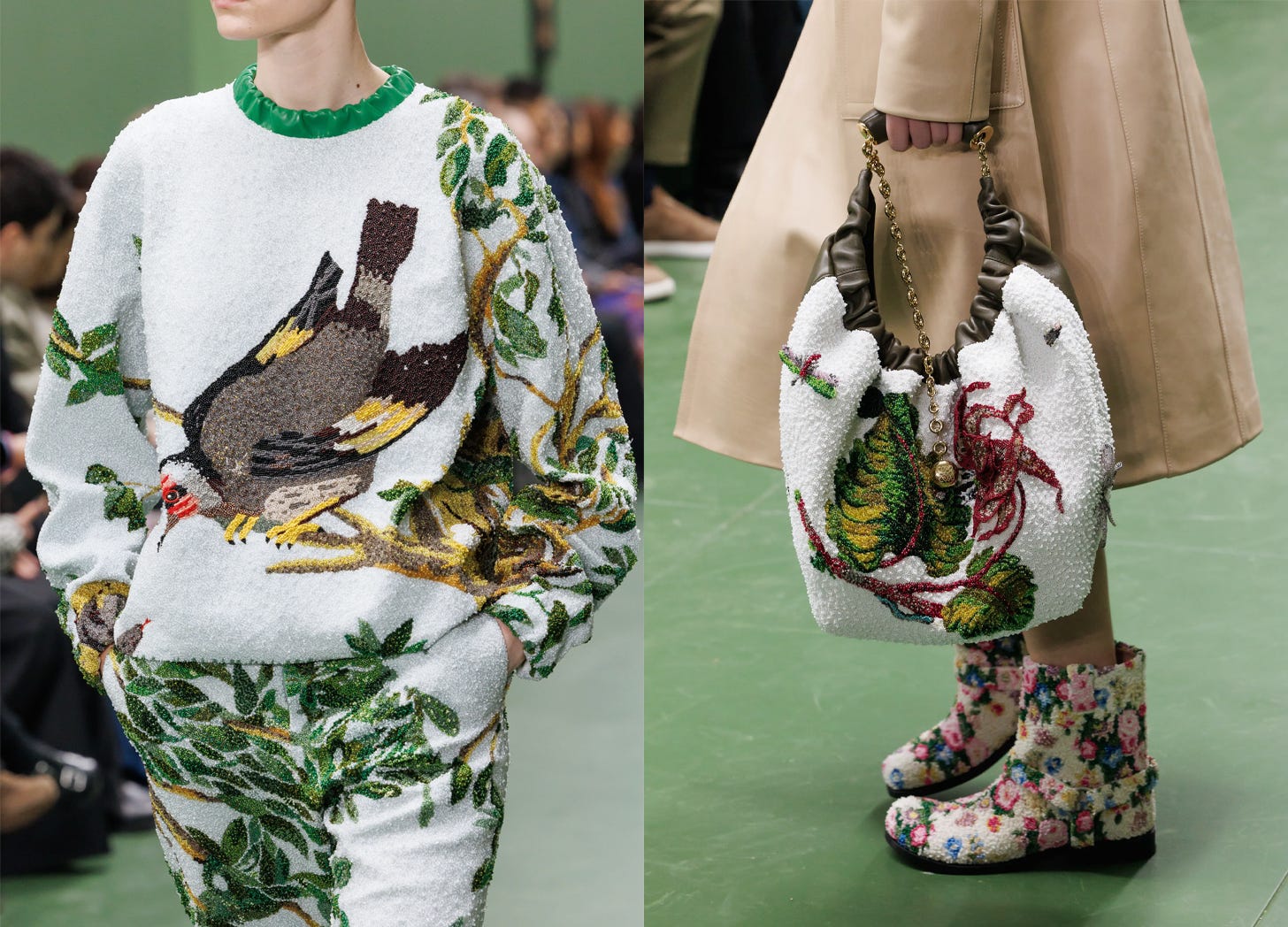How can we thoughtfully engage with fashion?
Some notes on wearability, Rothko, and a question about rubrics.
I do not believe that writing ever gets easier — in fact, it can only get harder. As you get more comfortable with the voice and pose, storing notes on technique and tact in the Zettelkasten of the mind, what was once an inflammatory writing flow becomes staccato, weighed down and gelded by judgment. I sit down to write and am castrated by every sentence.
Style, too, can only get harder. You bookmark a note on how to wear a bodysuit and suddenly you’re borrowing books on Japanese color pairings. So many rules to follow — no white after Labor Day, no navy and black, no buttoning the bottom of your waistcoat — and then, too, so many people urging you to break them. You begin constructing your own rules, from where you shop to what you wear to why you wear it. It is like being an adult convert to Catholicism, knee-deep in catechesis, while you strangle yourself with a snakeskin belt.
When we engage with fashion, much like with writing, we are often so concerned with our personal journeys — the obedience, the abnegation, the sinning — that we struggle to look at things objectively. When we read an interview with an author about their new book, we think: Would I read this? When we swipe through a fashion collection, we think: Would I wear this? This is not to say that thinking about yourself is necessarily wrong; it helps us develop a more comprehensive understanding of our tastes, disgusts, and desires. But if we can easily believe that some impressive books are just simply “not for us” — I don’t care for Sontag, but I understand the primacy of her work — then why do we struggle to believe that some fashion is simply not for us?
As I’ve been rewatching John Berger’s 1972 BBC miniseries Ways of Seeing, I’ve been thinking more and more about how we might thoughtfully engage with fashion, especially fashion that does not make sense to us. Part of the way we determine what we like in fashion is through the dissonance between what we encounter and what resonates. You see a pair of Ann Taylor chinos and feel queasy; not for you. You try on a pair of Raimundo Langlois jeans; yes, you will live in these. These are alchemical decisions, guided by body, comfort, vision, pricing, and aesthetics, among thousands of other subconscious considerations. These decisions can only be made through trial and error, whether a quick scroll through a website listing or the tactile experience of trying on a garment. Disgust and distinction can even be more palatable than unanticipated and overwhelming attraction. Solidifying our preferences often begins with a clear understanding of our aversions. When we encounter fashion that we cannot survey — fashion that does not belong to us, that exists beyond the prism of purchase and dressing — we erroneously believe it resists interpretation.
I am speaking, here, mostly, on runway fashion collections, especially haute couture, as these are pieces that very few of us will ever own, let alone wear (save for the sheer luck of a vintage ready-to-wear find). The self-professed fashion snob who cares solely about personal style hoists runway pieces on a mental dumbwaiter, selecting what makes sense and sending up the rest. The girl with a Jane Birkin Pinterest board is repulsed by Rick Owens’ flesh-colored balloon boots. The guy collecting archival Rick Owens pieces does not seriously consider the Johanna Ortizes and LoveShackFancies of the world. When we apply the same framework to runway fashion that we use for our day-to-day wear, we stymie our comprehension of fashion as an art and commercial object. Of course, the line between the two may be blurred, with industrial pressure occasionally interfering with a designer’s goals (look at Chanel). The chaos of this essential conflict — art and commerce, style and supply — is part of what prevents and distracts us from objectivity.
A fashion designer is an artist. An easy dialectic, here: you do not need to know much about Mark Rothko to know that his work inspires much tetchiness. Abstraction is as known for its rage-inducing qualities, now, as it is for its creative merits. Years ago, when my friend Elle and I saw a Rothko at the Bechtler Museum, she proclaimed with such finality: “That is not real art.” She liked Dalí and Kandinsky, and several of the other paintings and etchings in the exhibition, but Rothko was indefensible. For her, the painting — a large wash of muddy chartreuse, shielded by a long tangerine box — was not something she would like. It was not the kind of art that provided a touching faith, nor was it the kind of art she would hang in her home. It was a reaction based entirely on personal experience. And yet, to scrap against my own point, it was a correct reaction. What Rothko’s work represents has been spoken about for decades by critics and academics far more verbose than I, but the impact of his paintings is universally understood: to see a Rothko, up-close and in person, on these massive canvases as large as Tolstoy’s, is to surrender to the deepest gulfs of human emotion. The feeling, however nasty or pleasant, is the goal.
Designers also ask us to think and feel this way. Peter Do’s Helmut Lang debut asked us quite explicitly to feel (and was perhaps too transparent in its attempt). A better example: what does Loewe’s Jonathan Anderson do but ask us to feel? The FW24 collection, inspired by the work of late American painter Albert York, is an emotional exegesis, a meditation on bucolic, domestic life. Here are painted radishes and buttercups; animal fur glossed on a pristine white jumpsuit; voluminous pants that open like an autumn rose. Loewe is not my favorite brand. I would wear nothing of this in my personal life. I find it totally incongruous with my approach to fashion. But I look at Anderson’s work, season after season, and the artistry spins me dizzy. I am a little repulsed by a kitschy sweatshirt embroidered with a giant songbird, and yet I am also mesmerized — the strength of the technique, the tackiness as its own tack, the colors glittery and pure. I am in love with this thing I half-understand and mostly hate. The feeling is the goal.
To thoughtfully engage with what we see on the runway, wearability must be plucked into the stratosphere. For the common viewer, wearability is nothing more than a question of personal taste, and must be avoided; for the critic, wearability is nothing more than a question of popular taste, and must be avoided. Popularity is not the same thing as stylishness, nor is it the same as market fit. Skinny jeans are still popular — go to any mall in middle America — but you would be hard-pressed to find them on the runway, now. Wearability suggests that fashion derives value from its material conditions rather than its creative power. A pair of Valentino Garavani stilettos will press your toes until they bleed, but they’re still “wearable.” A silicone ball gag is “wearable,” but you’re not going to see a Nordstrom cashier in one (not, at least, on the clock). This semantic inconsistency reveals an essential truth: that the fashion we see on the runway has little to do with what can be worn and everything to do with what should be worn. We must approach Rick Owens the way we would a Rothko. It is imprudent to consider whether a Rick Owens gown can be worn to buy groceries or a Rothko can hang in our hallway. Better time is spent looking at these art objects and asking how they make us feel and what they might have to say.
To pull back the curtain: over the past few months, we’ve been seriously considering whether or not to introduce a points-based scoring system to HALOSCOPE for seasonal collections, a la many music mags. Whether you love or hate ratings, from Pitchfork to Letterboxd, the positives are vast — they give the mind structure and stimulate conversations, especially in a time when people are allergic to healthy artistic debate. But there is also the rub: as seen in conversations about if — and how — poetry can be measured, can a fashion collection be measured? Poetry and fashion are similar in the vibes-based analysis they oft engender. Do we believe that fashion is an arcane magic, like so many people seem to think of poetry, filled with esoteric secrets that transcend rubrical boundaries? Or do we believe that fashion should be appraised through a clinical structure, one that seeks to find logical patterns and help us understand this all better? It is a question I keep bouncing back and forth in my mind, especially as NYFW rears its pretty head.
If you have thoughts on this, let me know below — so I can thoughtfully engage with you.







Regarding rubrics: my own criteria for “rating” art almost always includes room for personal taste. It’s not necessarily interesting to me how “objectively good” something is without acknowledging our own personal tastes and biases. A review that acknowledges that one’s dislike is rooted in something I enjoy—that’s as good as an endorsement. I still want to know whether something is constructed thoughtfully, skillfully, effectively—in whichever ways are meaningful to the medium—but I want some personal perspective alongside.